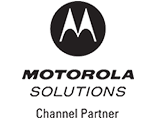 |
 |
Providing Two Way Radio Communications Call Us Today (609) 888-1234 |
|
License Plate Recognition
A Proven Force Multiplier that Helps Generate Revenue, Enhance Officer Safety, and Improve Intelligence Capabilities.A police cruiser rolls down the road, the officers inside heading back to headquarters at the end of their shift. It's nearly 3 AM, traffic is light, and what few cars they pass are traveling at the speed limit: 65 mph. A blue car zips by them in the opposite direction, no faster than the others… Yet a few minutes later, the officers pull the car over. The driver owes thousands of dollars for parking violations. How was he caught by tired officers, on a dark road, the cars passing each other at 130 mph? He wasn't. Protecting the public is a challenge in the best of times. These days, with limited budgets and ever-present security concerns, the task grows more difficult every day. What if there was a way to increase patrol effectiveness and boost intelligence gathering capabilities, without increasing headcount? What if you could find more stolen vehicles, track felons and drug dealers, and recover revenue from deadbeat violators, all while freeing personnel from a time-consuming, tedious task? That's the promise – and reality – of Automatic License Plate Recognition (ALPR) from Motorola and PIPS Technology, a Federal Signal company. A Motorola / PIPS ALPR system delivers several key capabilities:
ALPR on the StreetIn a single shift, an officer can manually check 50-100 license plates. During the same shift, an ALPR system can check 5,000 plates or more. Not surprisingly, police are the most enthusiastic adopters of ALPR technology. The technology has been put to many uses by law enforcement: Combating auto theft. Collecting revenue from ticket scofflaws. With an ALPR system, the police vehicle only has to pass the violator – whether parked or in traffic – and ALPR will alert the officer. A quick drive through a large parking lot will often locate several serial violators, whose cars can be towed or clamped until the fines are paid. The end result is fewer scofflaws getting away with nonpayment of fines. Monitoring known felons and other persons of interest. Reducing claims of profiling. Other government agencies – federal, state, and local – can make use of ALPR as well:Perimeter Security. Areas such as airports, seaports, water treatment facilities, nuclear power plants – even schools – are targets for both criminals and terrorists. ALPR can assist with protecting such facilities by watching for known persons of interest (such as registered sex offenders), unauthorized vehicles, or simply vehicles that show up too frequently. Leveraging Existing Equipment. Besides police cruisers, ALPR systems can be installed on other vehicles to extend a municipality's monitoring capabilities. Service vehicles can be equipped with the system, and automatically notify police when a violator or stolen vehicle is encountered. For example, the City of Chicago is installing ALPR on street sweeper vehicles. The system photographs license plates of illegally parked vehicles that block the path of the street sweeper, and a violation notice gets sent to the vehicle's owner. The entire operation is fully automatic, requiring no training or action from the operator. Access/Congestion Control. Several cities in Europe – including London and Stockholm – manage congestion by charging for vehicle access to the central business district at peak hours. Owners pre-pay for access, and fixed-mount ALPR systems ensure that those who did not pay are identified and fined by mail. The results have been most impressive: six months after implementation, London reported a 30% drop in congestion, increased bus ridership and decreased excess wait times on public transport. The charge also brings in extra money: £137 million – nearly $274 million – in net revenue for London in 2007. A Leading-Edge ALPR SolutionAn ALPR system must be able to locate license plates in its environment, photograph the plates at highway speeds and despite weather conditions, convert the photo into a license number, and make a decision as to whether to alert the officer, record the encounter, or disregard the information – in seconds. This requires top-grade photographic and processing hardware. Motorola and PIPS have worked together to create a leading-edge ALPR solution with unparalleled power, intelligence, and flexibility.  PIPS Slate™ Cameras. It is a mistake to think that cameras suited for video surveillance can also be used for ALPR. An ALPR camera needs to have the shutter speed and sensitivity to permit use in low light and poor visibility, while at the same time be able to react to ever-changing light conditions as the police vehicle is moving. The camera needs to capture video in full-color as well as infra-red, virtually simultaneously. Because it rides on the outside of a police vehicle, the camera needs to be protected from the elements, a vehicle's vibration, and shock PIPS' Slate cameras will not only handle the optics and capture, but also provide some data processing, ensuring a higher-quality capture and lessening the load on the Workstation in the vehicle. Their low profile also allows Slate cameras to blend in discreetly and not interfere with the light bar. PIPS PAGIS In-Vehicle Software.  The best cameras in the world will be of no use if the information they capture is not properly recorded, analyzed, and acted on. ALPR software needs to convert license plate photographs into alphanumeric license plate numbers, accurately and instantaneously. Accuracy is key: missed hits – or worse yet, false positives – will cause officers to ignore alarms. Finally, a system's user interface should be designed with a busy officer in mind – PIPS' PAGIS software is unobtrusive during routine patrol, only sounding an alarm when action is needed. Customizable color codes reinforce alarm descriptions: a different color can be used for a parking scofflaw vs. a stolen vehicle or carjacker, making it easy to make the correct decision in seconds. PIPS Back Office System Server (BOSS®) Software. ALPR systems can generate vast amounts of data: database hits, GPS coordinates, time of day, photographs, plate numbers, and more. Back at headquarters, BOSS turns this data into useful intelligence. BOSS is designed to enable law enforcement agencies to organize and archive data collected from multiple mobile and fixed site ALPR deployments. Users can query the data using multiple search parameters including time, date, full or partial plate, location and user. BOSS can also map all locations related to a single plate to track vehicle movements. The BOSS web interface allows data to be easily shared across multiple locations and agencies. Resources Spotlight |
|



